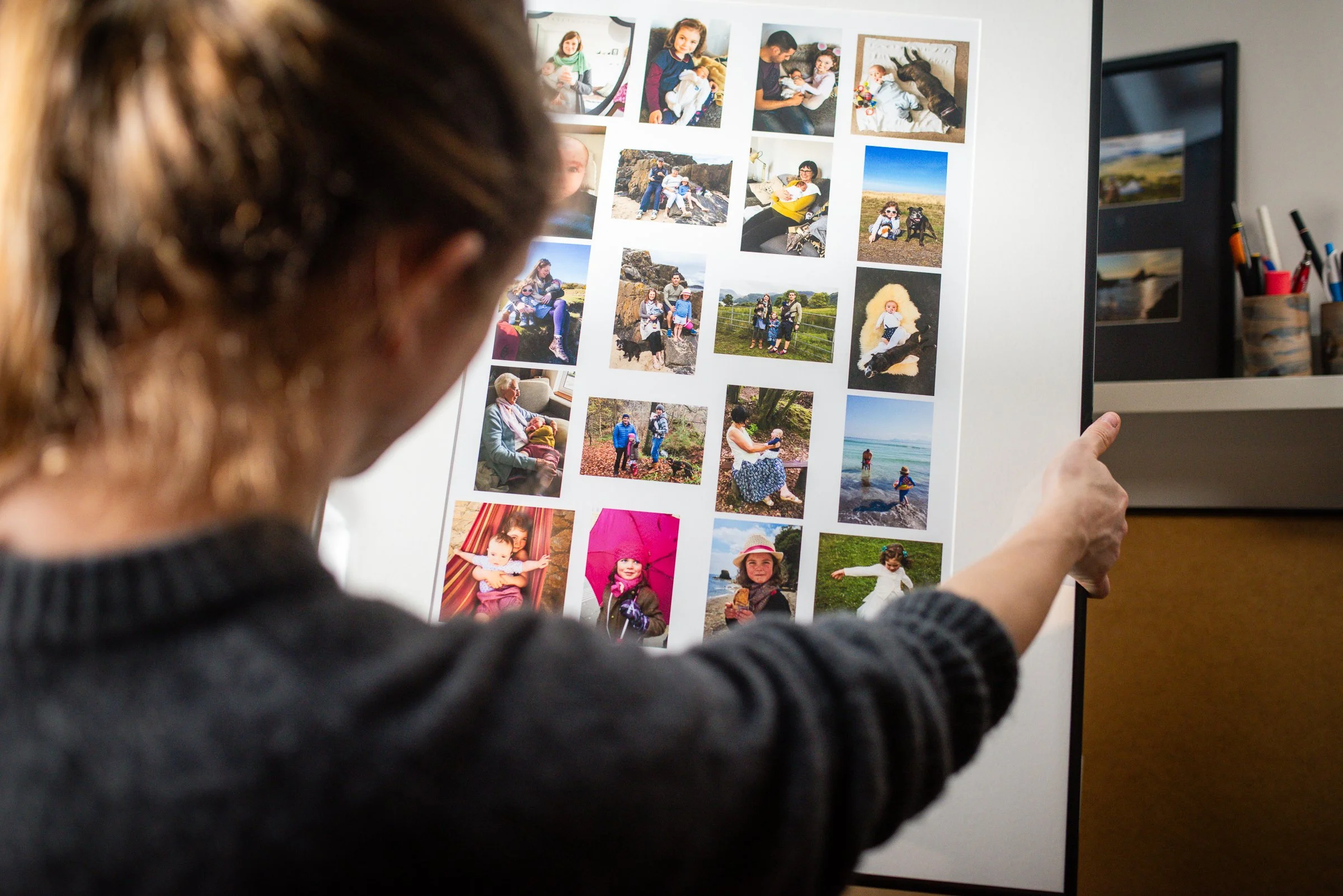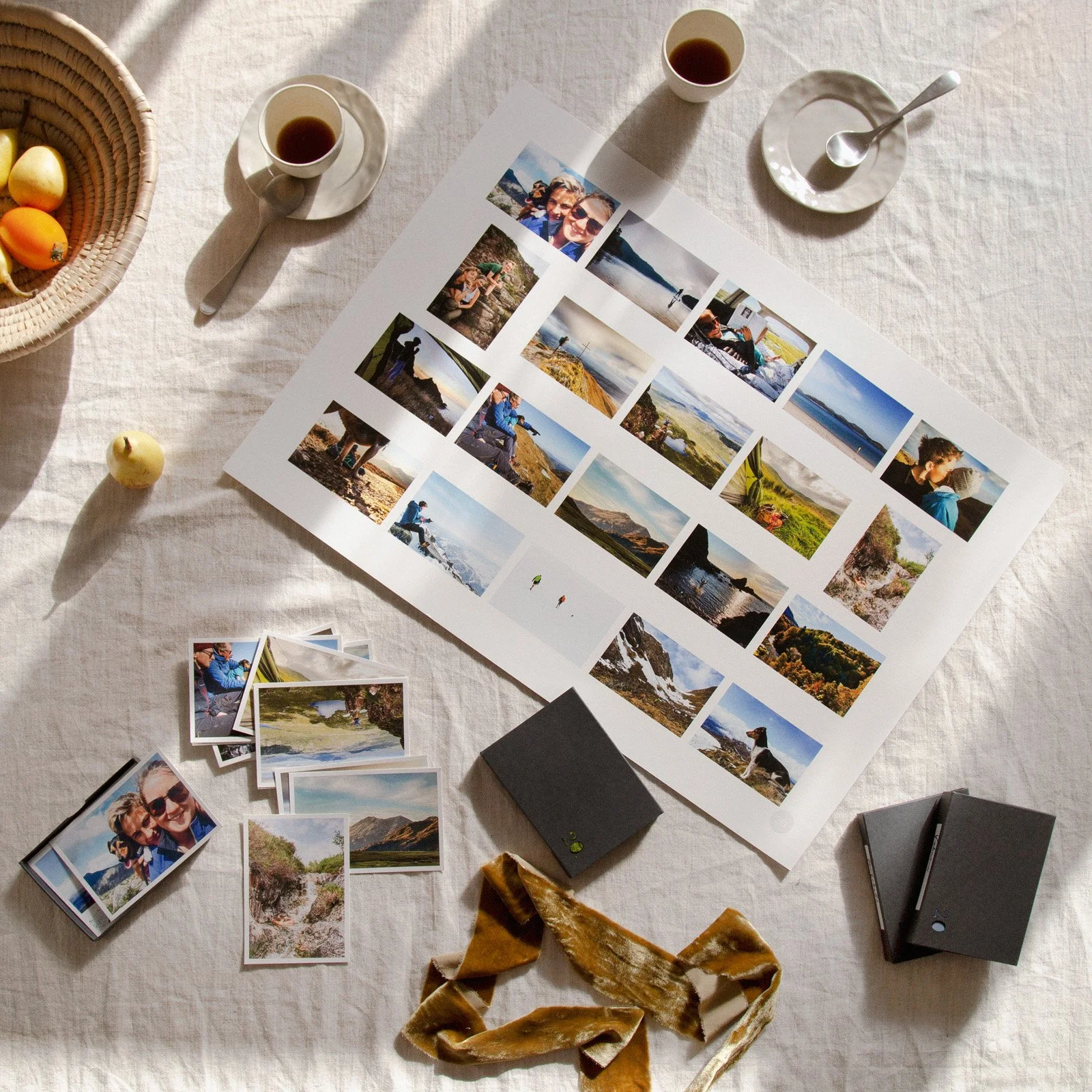Do you know your story?
Exploring the transformative potential of family photos on happiness and how to harness their storytelling magic in your own life.
Are photo prints simply ‘nice pictures for our walls’ or ‘something more meaningful’?
It’s certainly the first, but there is evidence it is actually something far more important too.
There was a ground-breaking study called ‘Do you know…?’ by Dr Duke and Dr Fivush at Emory University. The study found that the single best predictor of children’s emotional health and happiness is…Their Story.
They gave children a simple "What do you know" test.
Do you know where your grandparents were born?
Do you know where your parents went to High School?
Do you know anybody in your family who had a difficult situation, an illness, and they overcame it?
My childhood in 80s South Africa; I remember listening to Graceland by Paul Simon as we drove across the continent. Printed photos show us the people they know, but not as they see them today… that we all are fitting into something bigger.
The "do you know" test was the single biggest predictor of emotional health and happiness. People who have a sense that they're part of a larger narrative have greater self-confidence.
“Family reminiscing is especially important”, says Fivush. “When children learn family stories it creates a shared history, strengthens emotional bonds and helps them make sense of their experiences.
This skill is particularly important for children, whose identity tends to get locked in during adolescence. … When faced with a challenge, happy families, like happy people, just add a new chapter to their life story that shows them overcoming the hardship.”
I find this fascinating, inspiring and staggering.
Photos are an essential part of our means to tell our family story and a way to access and share our memories. “Worth a thousand words” as the saying goes.
A story to tell the kids: This is from the chapter of my life where I was studying deep-sea creatures in the Monterey submarine canyon in Northern California. In putting together this piece, I began talking about it with my children - these three prints brought it to life for my children in a way that they hadn’t engaged before - “What is that mummy?'‘. “That’s you, isn’t it?”. They might even have said ‘So cool!’ but that might be wishful remembering now that I’m writing this up.
A photo can set the stage for the story around that one moment; acting as a jumping off point that brings a story to life, and adds truth and detail in a way you could never describe.
Prints are held and shared - in that duality of being able to touch an image gives depth to that story.
Conversely, digital photos are one-dimensional raw materials that are forgotten in a swipe. Or too many photos become like too many words… you can’t find the story you’re looking for in the overwhelming number.
(Did you know the human brain can take in about 20 images before it’s saturated - hence our name and why we don’t do more.)
Not just pretty pictures
So we’re on the same page; prints of your memories, aren’t just pretty pictures. But deciding where to begin can be pretty daunting so we just put off taking the first step.
Some things I’d consider to get unstuck:
Choose just one photo that you love to print or, if it’s easier, choose a specific event or person that you want to remember.
Make prints of your good times, but also the times that were tough too. Then continue to add new chapters to your life story. This story is not yet finished!
Share your story with the people that matter to you. Far from being just pretty pictures, they will have the means to make a profound impact on not just your resilience but also that of generations to come.
If you want someone to help you curate that story, those memories - then 20 Photos is here to help. My greatest skill and love is to work on these.
I will also be teaching a workshop on exactly this - how to choose your story, choose the photos, edit and print. You can sign up to be notified when the workshop is ready.




